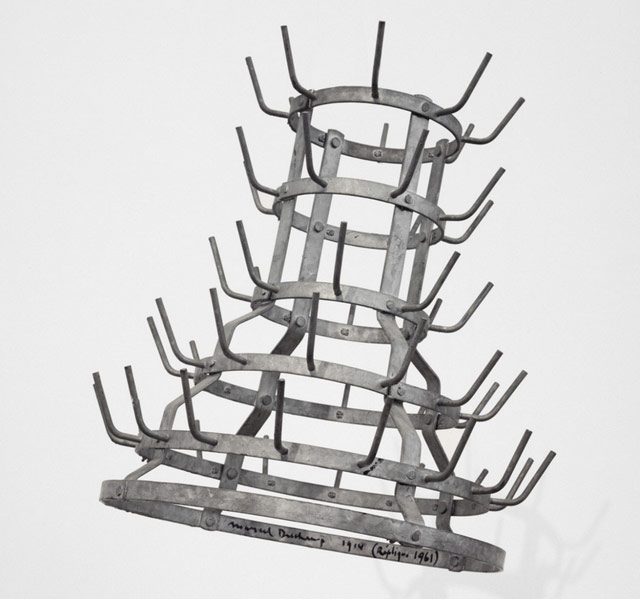One man’s art is another person’s trash
The very first of Marcel Duchamp’s readymades — ordinary manufactured objects that became art through a minimal artistic process — was called Bottle Rack. This is a replica housed at the Philadelphia Museum of Art:

The original piece was purchased by Duchamp at BHV, a historic Parisian department store in the 4th arrondissement. It was sold as a rack for drying bottles. Duchamp intended to finish the piece by signing his name on it, but his sister had already thrown it out.
Legend has it that Duchamp’s second readymade didn’t fare so well either. “En prévision du bras cassé” (“In advance of the broken arm”) was a snow shovel on which its title was painted. A replica of the piece was allegedly mistaken for an actual shovel at a show in Chicago and used to clear sidewalks. But perhaps Duchamp wasn’t very much put out by the mistake because the snow-clearing artist inadvertently turned the shovel into what Duchamp called a “readymade réciproque” or “reciprocal readymade”.
He said that this would be a work of art used as an everyday, readymade object, such as “using a Rembrandt as an ironing board.” The readymade took an everyday mass-produced object and treated it as art. The assisted readymade took a mass-produced reproduction of a work of art and made it into a unique commentary on that work. The reciprocal readymade took a unique work of art and treated it like a mass-produced utilitarian object.
Ah, the circle of life.





Stay Connected